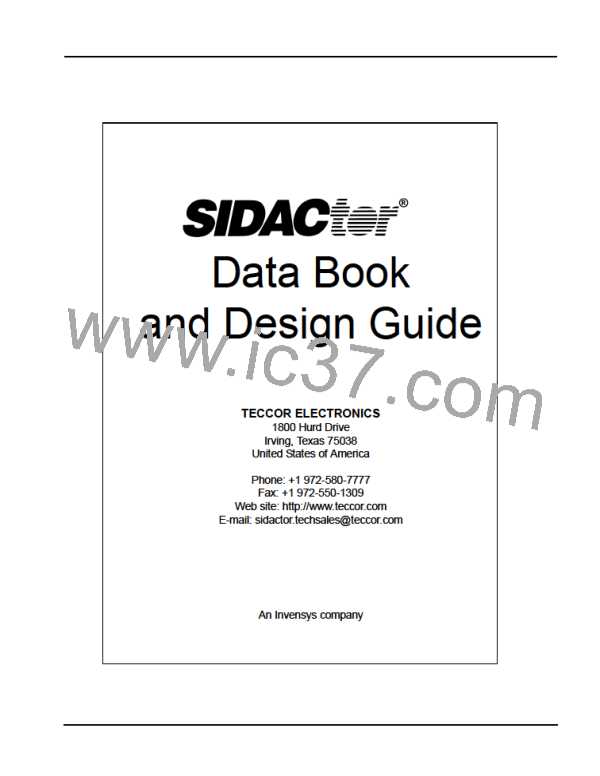Fuse Selection Criteria
Fuse Selection Criteria
A fuse can be relied upon to operate safely at its rated current, at or below its rated voltage.
This voltage rating is covered by the National Electric Code (NEC) regulations and is a
requirement of UL as protection against fire risk. The standard voltage ratings used by fuse
manufacturers for most small dimension fuses are 32 V, 63 V, 125 V, 250 V, and 600 V.
Fuses are not sensitive to changes in voltage; however, they are sensitive to changes in
current. The fuse will maintain “steady-state” operation from zero volts to the maximum
voltage rating. It is not until the fuse element melts and internal arcing occurs, that circuit
voltage and available power become an issue. The interrupt rating of the fuse addresses
this issue. Specifically, the voltage rating determines the ability of the fuse to suppress
internal arcing that occurs after the fuse link melts.
For telecommunication applications, a voltage rating of 250 V is chosen because of the
possibility of power line crosses. A three-phase voltage line will have voltage values up to
220 V. It is desirable for the voltage rating of the fuse to exceed this possible power cross
event.
UL 60950 has a power cross test condition that requires a fuse to have an interrupt rating of
40 A at 600 V. GR 1089 contains a power cross test condition that requires a fuse to have
an interrupt rating of 60 A at 600 V. A 125 V-rated part will not meet this requirement.
A 250 V part with special design consideration, such as Teccor’s F1250T TeleLink
fuse, does meet this requirement.
Because fuses are rated in terms of continuous voltage and current-carrying capacity, it is
often difficult to translate this information in terms of peak pulse current ratings. To simplify
this process, Table 5.1 shows the surge rating correlation to fuse rating.
Table 5.1 Surge Rating Correlation to Fuse Rating
Equivalent IPP Rating
Fuse Rating
(mA)
10x160 µs
(A)
10x560 µs
10x1000 µs
(A)
(A)
250
350
400
500
600
750
1000
1250
30
45
50
65
75
90
130
160
15
25
30
35
45
65
85
115
10
20
25
30
35
50
65
100
Notes:
•
•
The IPP ratings apply to a 2AG (glass body) slow blow fuse only.
Because there is a high degree of variance in the fusing characteristics, the IPP ratings listed should only be used as approximations.
http://www.teccor.com
+1 972-580-7777
5 - 8
© 2002 Teccor Electronics
SIDACtor Data Book and Design Guide
®

 TECCOR [ TECCOR ELECTRONICS ]
TECCOR [ TECCOR ELECTRONICS ]